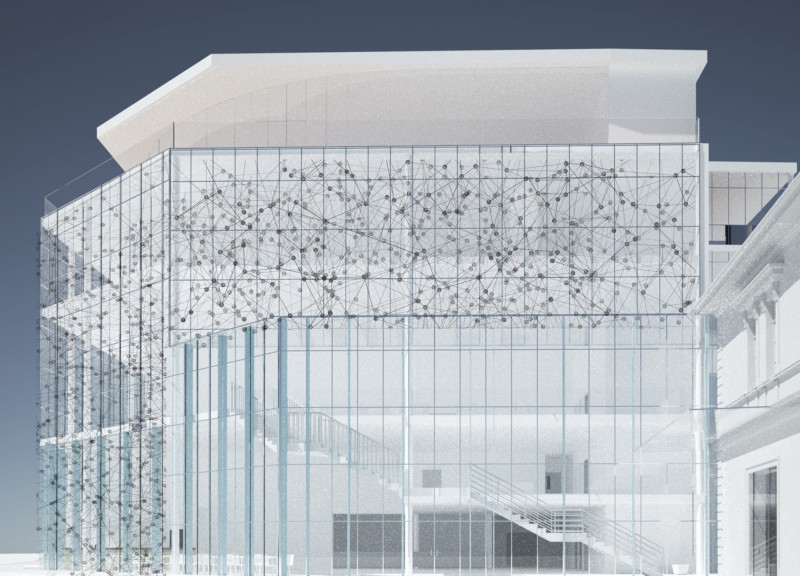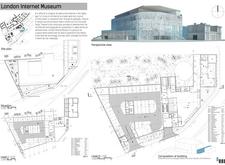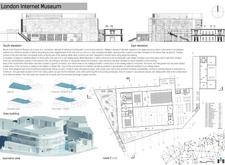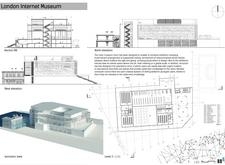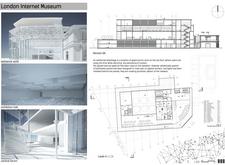5 key facts about this project
## Project Overview
The London Internet Museum is located in the heart of London and is designed to showcase the evolution of the Internet and its influence on contemporary life. The architectural concept integrates historical elements with modern design, aiming to create a space that educates visitors about the Internet's past while promoting dialogue about its current and future implications. The museum is envisioned not just as an exhibition venue, but as an interactive environment fostering digital literacy and community engagement.
## Spatial Arrangement
### Functional Zoning
The site plan is organized into distinct functional zones, facilitating fluid visitor movement and engagement. Key areas include a central entrance leading to expansive exhibition halls, specialized education spaces for workshops and classes, and upper-level dining areas that promote social interaction. This arrangement prioritizes intuitive pathways and encourages exploration of various exhibits.
### Architectural Composition
The building's massing is characterized by a juxtaposition of historical and contemporary elements, with substantial glass panels incorporated into the south and east façades. These features not only enhance visibility into the museum but also symbolize the transparency inherent in the sharing of knowledge. Unique design elements, including perforated panels and a suspended ceiling in the main hall, create dynamic visual experiences while echoing themes of connectivity throughout the space.
## Material Selection
The choice of materials reflects a synthesis of modernity and historical context. Extensive use of glass signifies openness, while structural steel provides a contemporary contrast to remnants of the existing historical architecture. Perforated panels serve both aesthetic and functional purposes, aiding in light diffusion and climate control, whereas concrete establishes a robust foundation, connecting the design to the site's historical character. Additional materials such as LED lighting and natural stone further enhance the integration of modern technology with historical elements, ensuring cohesiveness across the museum's design.


